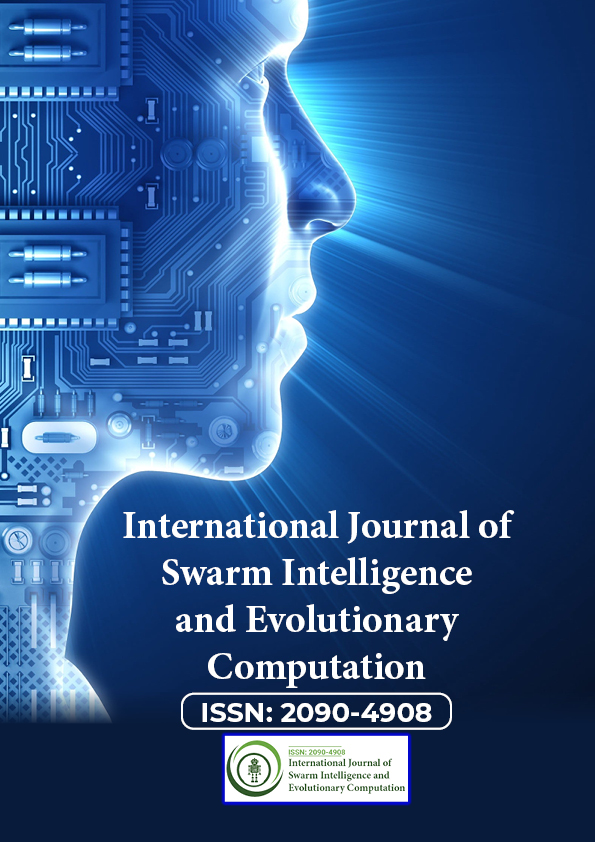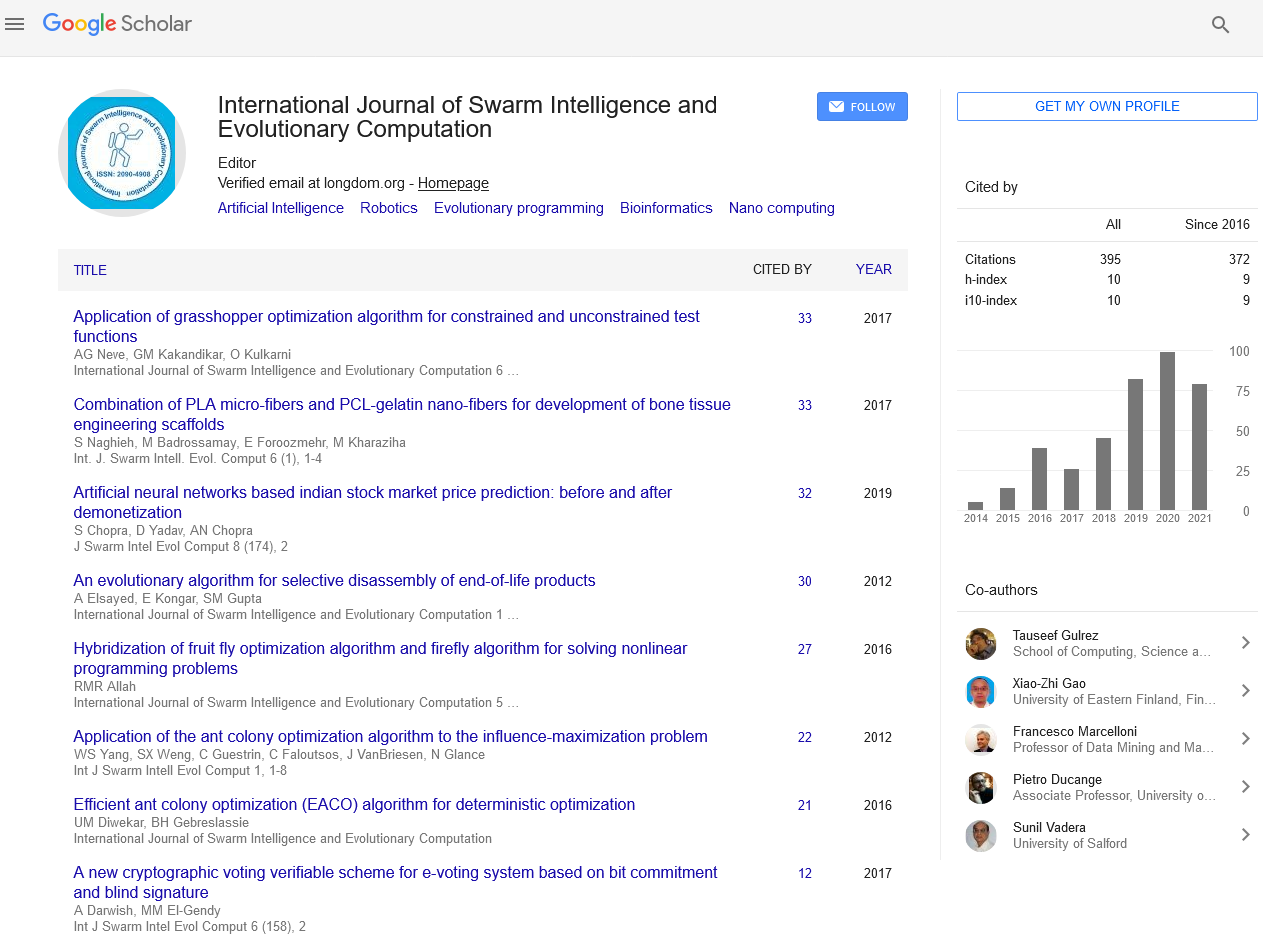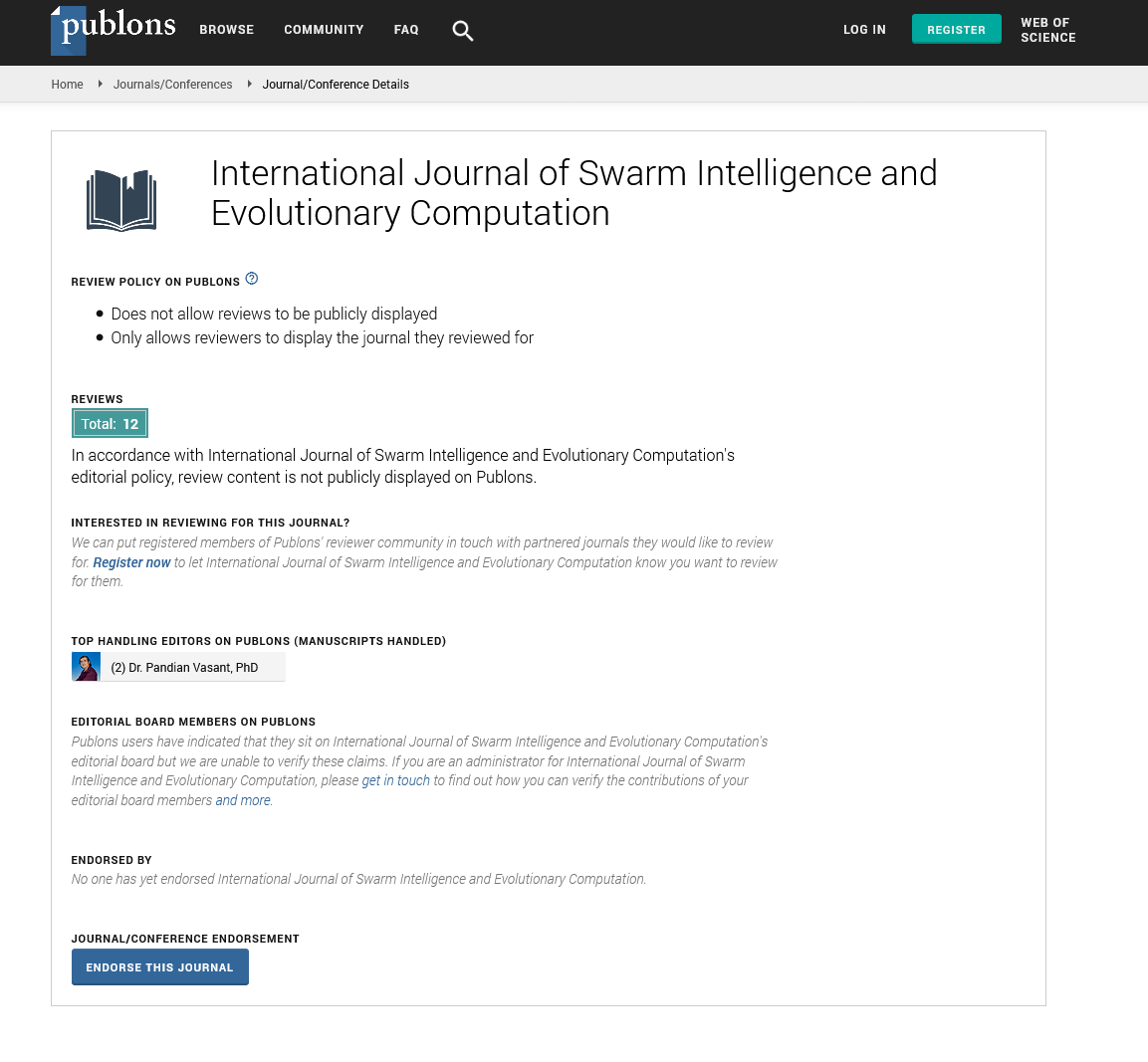Indexed In
- Genamics JournalSeek
- RefSeek
- Hamdard University
- EBSCO A-Z
- OCLC- WorldCat
- Publons
- Euro Pub
- Google Scholar
Useful Links
Share This Page
Journal Flyer

Open Access Journals
- Agri and Aquaculture
- Biochemistry
- Bioinformatics & Systems Biology
- Business & Management
- Chemistry
- Clinical Sciences
- Engineering
- Food & Nutrition
- General Science
- Genetics & Molecular Biology
- Immunology & Microbiology
- Medical Sciences
- Neuroscience & Psychology
- Nursing & Health Care
- Pharmaceutical Sciences
Commentry - (2022) Volume 11, Issue 10
Robotic Control and Communication of Intelligent Swarms
Allen Wilson*Received: 01-Sep-2022, Manuscript No. SIEC-22-18841; Editor assigned: 05-Sep-2022, Pre QC No. SIEC-22-18841 (PQ); Reviewed: 19-Sep-2022, QC No. SIEC-22-18841; Revised: 26-Sep-2022, Manuscript No. SIEC-22-18841 (R); Published: 03-Oct-2022, DOI: 10.35248/2090-4908.22.11.277
Description
Swarm Intelligence is a powerful concept that revolves around community members working together to achieve a common goal. Swarm Intelligence is a collection of heuristic solutions inspired by animal swarm behaviour and capable of providing empirical solutions to many computationally difficult problems across multiple disciplines. There by introducing Swarm Intelligence, its biological principles, and the mechanisms that under pin collective behaviour, as well as the most important Swarm Intelligence heuristics and their traditional applications. Following this introduction, it will survey the state of the art in robot cooperation in order to present the benefits, issues, and challenges of this research field of swarm intelligence and robot cooperation towards the description of a very recent discipline: Swarm Robotics, of which this will show existing taxonomies and applications.
The study of the mechanisms underlying insect collective behaviour began more than a century ago. To justify the complexity of these behaviours, it was initially assumed that the individual insects had a basic understanding of the overall structure that needed to be produced and, as a result, could make the appropriate decisions. In other words, there was thought to be a causal relationship between the complexities of decisions, patterns observed at the colony level, and the behavioural and cognitive complexity required at the individual level to build the decisions and models. As a result, it was assumed that the model governing those businesses was hierarchical and centralized. However, the majority of recent research has revealed a completely different organisation. Individual insects, as now know, do not require representation, schema, or explicit knowledge of the global structure they produce. A single insect cannot evaluate the global situation in order to centralise information about the state of the entire colony and later control the tasks that must be completed by other workers. In these colonies, there is no supervisor. A social insect colony is very similar to a decentralised system composed of autonomous units distributed throughout the environment, and it can be described by simple probabilistic cause-effect behaviors. The principles underlying insect interactions are carried out using local information from a global model. Each insect follows a few simple rules. For example, ants can perform approximately 20 different elementary behaviours on average. The organisation emerges at the colony level from interactions between individuals who exhibit these simple behaviours. These interactions ensure the spread of information within the colony as well as the organisation of each individual's activity. Social insects can solve a wide range of problems and respond to external challenges thanks to these sophisticated networks of interactions.
Conclusion
Swarm Intelligence research is yielding insights that can help humans manage complex systems ranging from truck routing to military robots. After considering the main applications of Swarm Intelligence, presented the most important results about robot cooperation, attempting to critically analyse the issues and challenges related to this field and presenting the main benefits. The final contribution of this chapter is the synergic fusion of Swarm Intelligence and robot cooperation, which usually known as Swarm Robotics. The specifically presented some intriguing taxonomies and common applications of this new field of study.
Citation: Wilson A (2022) Robotic Control and Communication of Intelligent Swarms. Int J Swarm Evol Comput. 11:277.
Copyright: © 2022 Wilson A. This is an open-access article distributed under the terms of the Creative Commons Attribution License, which permits unrestricted use, distribution, and reproduction in any medium, provided the original author and source are credited.


